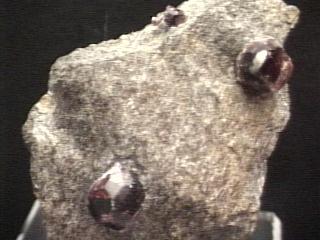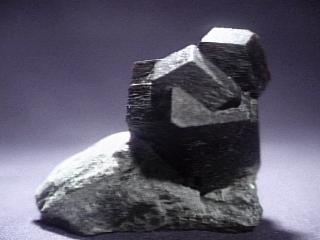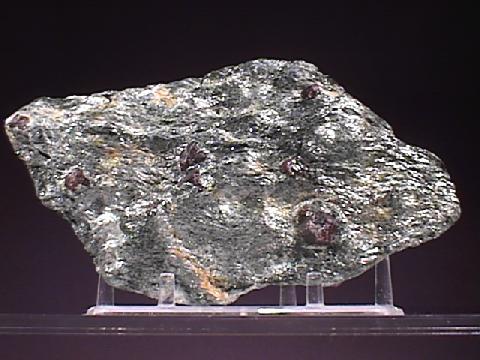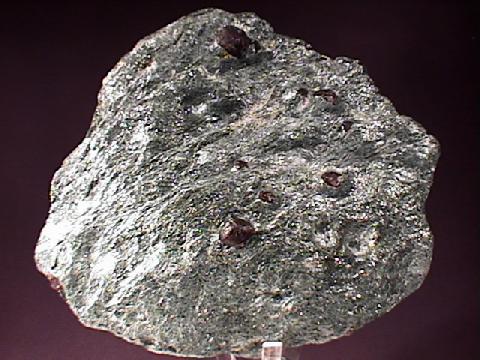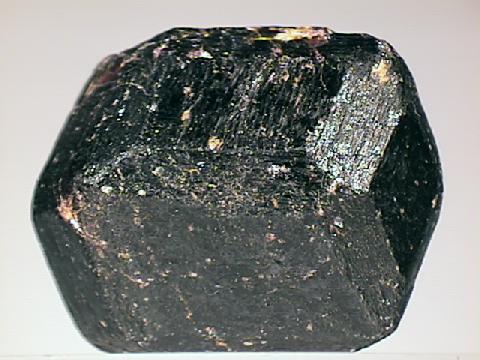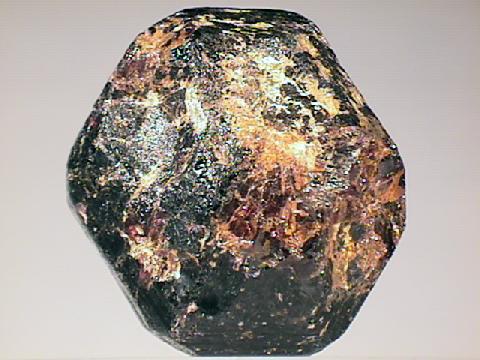 THE MINERAL ALMANDINE
THE MINERAL ALMANDINE
- Chemistry: Fe3Al2(SiO4)3, Iron Aluminum Silicate
- Class: Silicates
- Subclass: Nesosilicates
- Group: Garnets
- Uses: Gemstone and abrasive
- See our natural Almandine Mineral Specimens
For Garnet Jewelry, see: GARNET JEWELRY
Almandine is the most common of the garnets and is usually the garnet found in garnet schists (a type of metamorphic rock composed mostly of mica).
Precious transparent crystals are frequently used as gemstones along with its close cousin,
Pyrope.
Almandine, like other garnets, forms rounded crystals with 12 rhombic or 24 trapezoidal faces or combinations of these and some other forms.
This crystal habit is classic for the garnet minerals.
Almandine is the iron aluminum garnet.
Magnesium can substitute for the iron and become more like pyrope, the magnesium aluminum garnet.
Pure almandine and pure pyrope are rare in nature and most specimens are a percentage of the two.
The change in density from almandine (4.3) to pyrope (3.6) is the only good test to determine a specimens likely identity.
PHYSICAL CHARACTERISTICS:
- Color is typically red to brown, sometimes with a tinge of purple and sometimes a deep enough red to appear black.
- Luster is vitreous.
- Transparency crystals are transparent to translucent.
- Crystal System is isometric; 4/m bar 3 2/m
- Crystal Habits include the typical rhombic dodecahedron. also seen is the 24 sided trapezohedron.
Combinations of these forms are common and sometimes the rare faces of the
hexoctahedron, a 48 sided crystal habit that rarely is seen by itself, can also combine with these other forms making very attractive, complex and multifaceted crystals.
Massive occurrences are also common.
Crystals typically embedded and isolated, from other alamadine crystals, in metamorphic rocks.
- Cleavage is absent.
- Fracture is conchoidal.
- Hardness is 6.5 - 7.5
- Specific Gravity is approximately 4.3 (above average for translucent minerals and the highest density of all garnets)
- Streak is white.
- Associated Minerals are micas, staurolite, quartz and feldspars.
- Other Characteristics: index of refraction is 1.83 and multiplicity of faces give a striated appearance on some crystals.
- Notable Occurrences include Wrangel Alaska; Germany; Norway and India.
- Best Field Indicators are crystal habit, color, density and hardness.
 THE MINERAL ALMANDINE
THE MINERAL ALMANDINE
